 Did you know that 40% of the Earth’s surface is covered in Rangelands? However with the increase of brush encroachment, there has been an increase in conversion from rangeland into undesirable and unproductive species. In the Rolling Plains the primary invasive species focused on is prickly pear cactus, in South Texas Plains huisache is the primary focused species, and in the Edwards Plateau, Ashe & Redberry Juniper are of concerns. One fun fact, Mesquite is considered to be a secondary problem in all three of these ecoregions.
Did you know that 40% of the Earth’s surface is covered in Rangelands? However with the increase of brush encroachment, there has been an increase in conversion from rangeland into undesirable and unproductive species. In the Rolling Plains the primary invasive species focused on is prickly pear cactus, in South Texas Plains huisache is the primary focused species, and in the Edwards Plateau, Ashe & Redberry Juniper are of concerns. One fun fact, Mesquite is considered to be a secondary problem in all three of these ecoregions.
Texas Pasture Land Values Summary
Patch Burning Improves Nutritional Quality of Two Gulf Coast Grasses
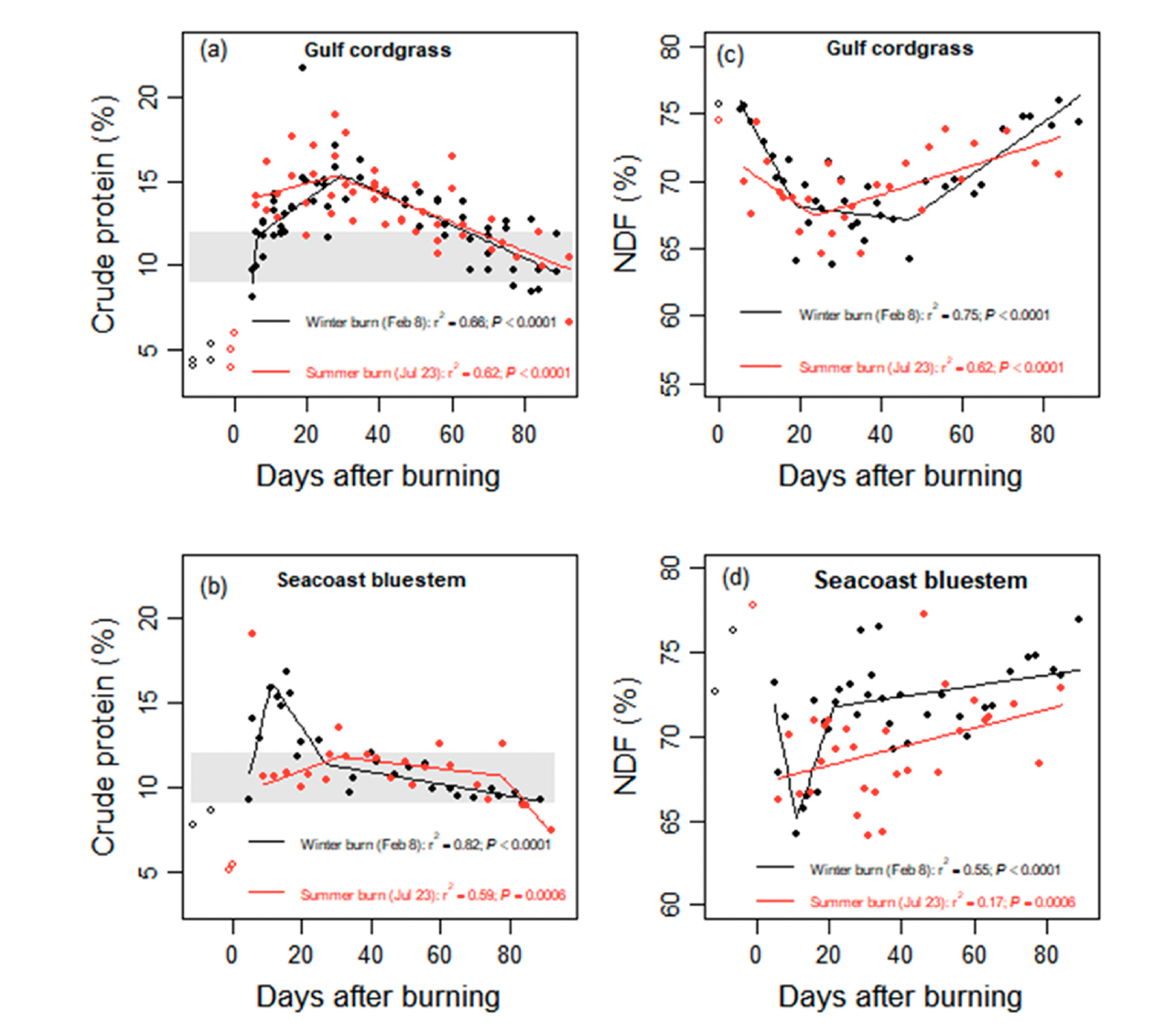 Gulf cordgrass and seacoast bluestem are native warm season grasses that are found in the Texas Coastal Prairies and Marshes ecoregions. Mature Gulf cordgrass has a nutritional value that is considered poor for grazing animals while the seacoast bluestems nutritional value is considered fair to good in spring and early summer.
Gulf cordgrass and seacoast bluestem are native warm season grasses that are found in the Texas Coastal Prairies and Marshes ecoregions. Mature Gulf cordgrass has a nutritional value that is considered poor for grazing animals while the seacoast bluestems nutritional value is considered fair to good in spring and early summer.
Haynes, V.L.; Avila-Sanchez, J.S.; Toomey, A.E.; Ortega-S., J.A.; Campbell, T.A.; Ortega-S., A., Jr.; Rideout-Hanzak, S.; Wester, D.B. Patch Burning Improves Nutritional Quality of Two Gulf Coast Grasses—And Winter Burning Is Better than Summer Burning. Fire 2023, 6, 105. https://doi.org/ 10.3390/fire6030105
[Read more…] about Patch Burning Improves Nutritional Quality of Two Gulf Coast Grasses
What Goats Really Eat, With Grazing Menu Tips to Benefit Your Ranch
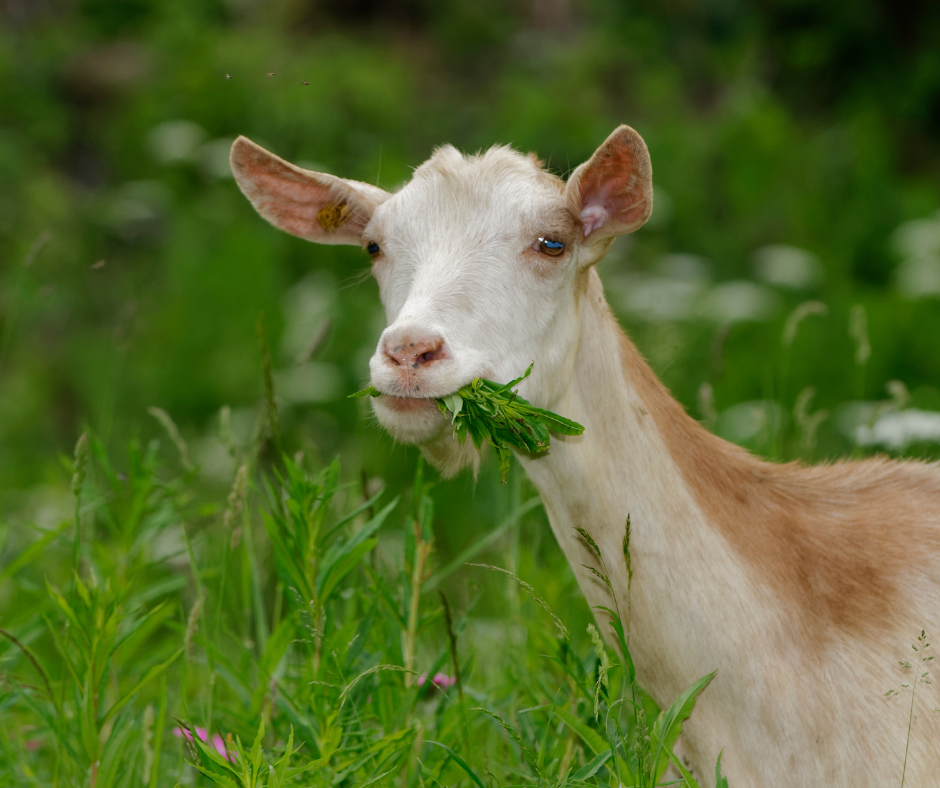 Did you know that goats are meticulous eaters? They move across the landscape selectively browsing, picking out desirable pieces of forage, and combing hard to access pastures and areas for their favorite plant parts and species.
Did you know that goats are meticulous eaters? They move across the landscape selectively browsing, picking out desirable pieces of forage, and combing hard to access pastures and areas for their favorite plant parts and species.
[Read more…] about What Goats Really Eat, With Grazing Menu Tips to Benefit Your Ranch
Grasslands are the Forgotten Ecosystem
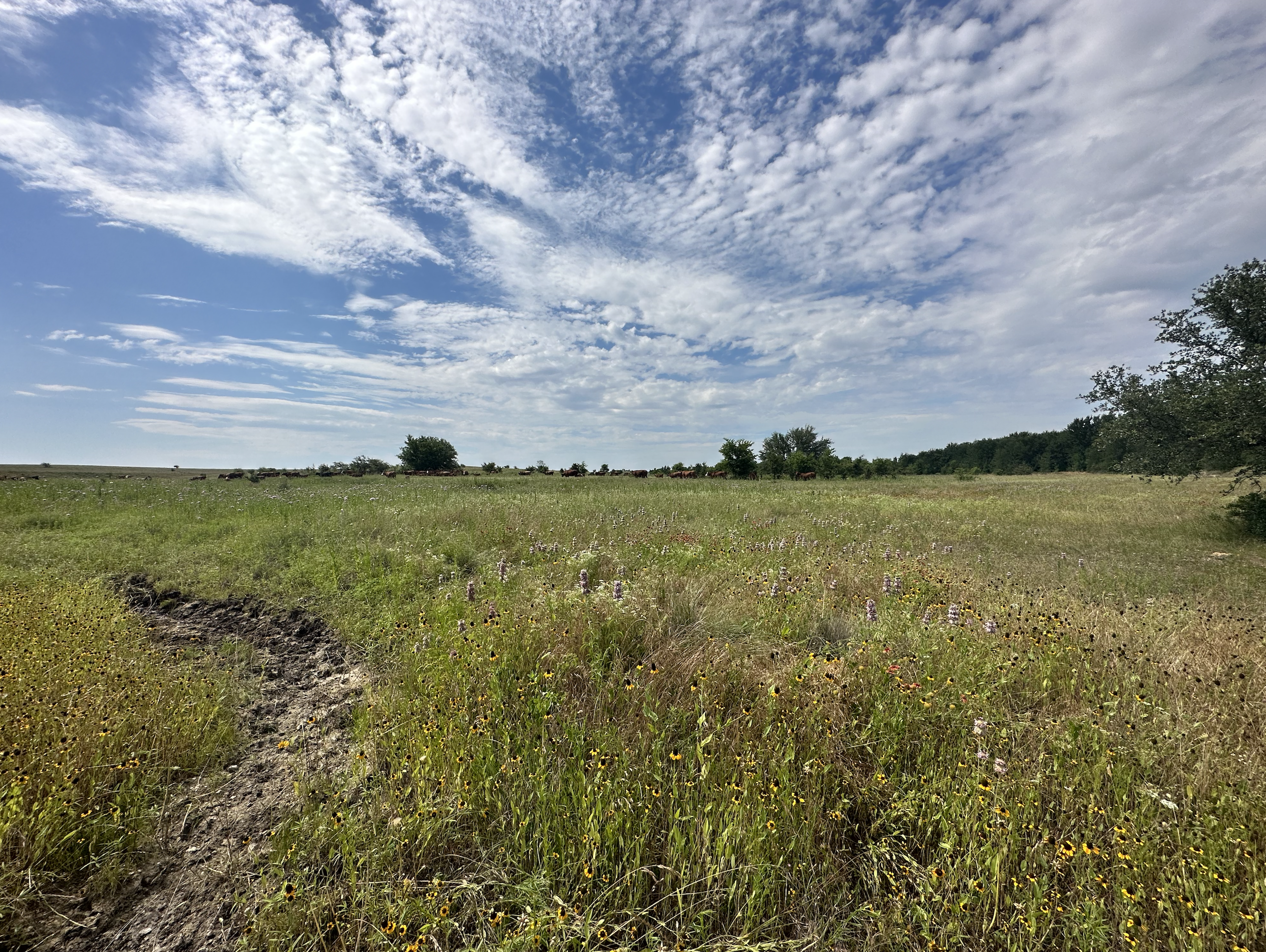 “Anybody can love the mountains, but it takes a soul to love the prairie.” — Willa Cather
“Anybody can love the mountains, but it takes a soul to love the prairie.” — Willa Cather
Since the 1800s, North Americans have historically overlooked the significance of grasslands. With centuries of farming, ranching, energy development and suburban growth, grassland protection and conservation have been pushed aside.
Integrated Pest Management for Woody Encroachment
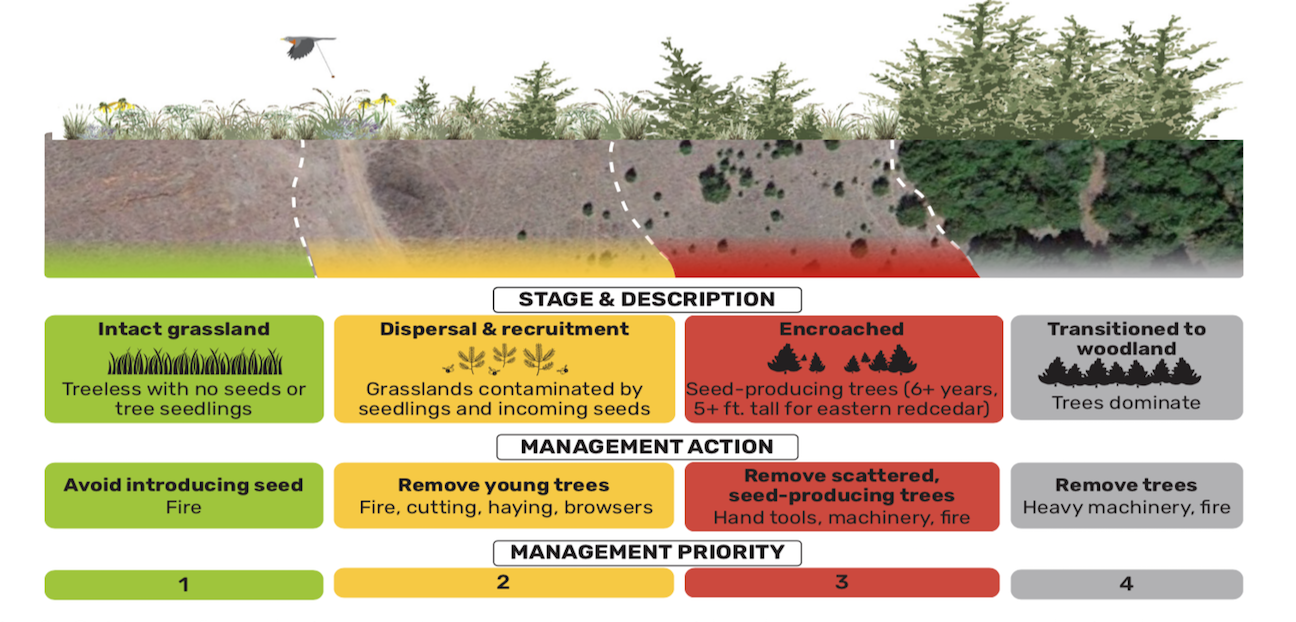 The top 5 woody invasive plant species in the Great Plains Grasslands include; Eastern redcedar, Honey mesquite, Chinese tallow, Ashe juniper, and Redberry juniper. Past brush management efforts have been unable to stop or reverse the loss of grasslands at county, state, or regional scales. Traditional management efforts have assumed that there are tolerable levels of the top five woody pests in grasslands before encroachment becomes a resource concern and mechanical or chemical removal of woody plants will restore a site back to a grassland. Scientists are now recommending more integrated approaches for dealing with woody species and ending the reinvasion cycle in grasslands.
The top 5 woody invasive plant species in the Great Plains Grasslands include; Eastern redcedar, Honey mesquite, Chinese tallow, Ashe juniper, and Redberry juniper. Past brush management efforts have been unable to stop or reverse the loss of grasslands at county, state, or regional scales. Traditional management efforts have assumed that there are tolerable levels of the top five woody pests in grasslands before encroachment becomes a resource concern and mechanical or chemical removal of woody plants will restore a site back to a grassland. Scientists are now recommending more integrated approaches for dealing with woody species and ending the reinvasion cycle in grasslands.
[Read more…] about Integrated Pest Management for Woody Encroachment
100 Years of Data to Identify the Right Time to Regenerate Perennial Grasses
 In a recent study, the Army Research Laboratory in N.M. and the USDA ARS’s Jornada Experimental Range, used 100 years of measurements of perennial grass growth to identify how climate controls changes in grass cover.
In a recent study, the Army Research Laboratory in N.M. and the USDA ARS’s Jornada Experimental Range, used 100 years of measurements of perennial grass growth to identify how climate controls changes in grass cover.
[Read more…] about 100 Years of Data to Identify the Right Time to Regenerate Perennial Grasses
SRM Multidisciplinary Rangeland Ecosystem Services Report
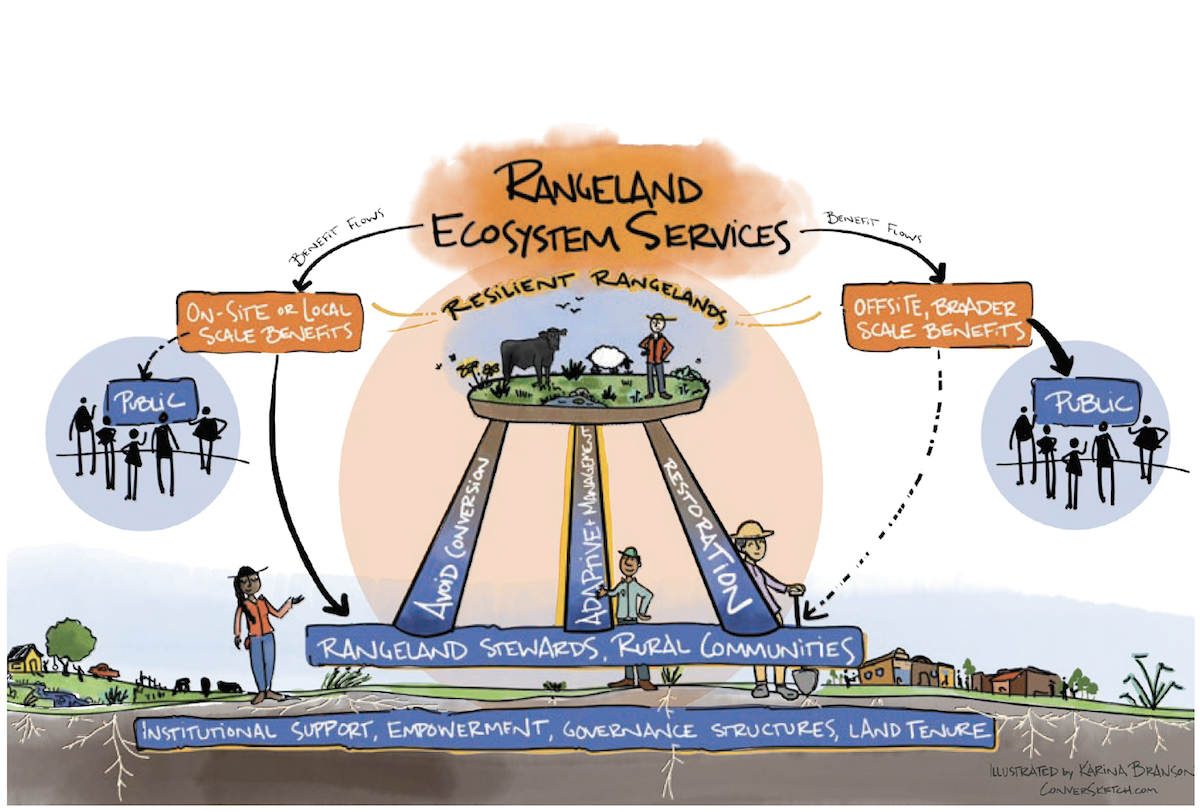 The Society for Rangeland Management recently released their Rangeland Ecosystem Services Report: Connecting Nature and People. The report includes five key rangeland service topic areas including; food and fiber, water as an ecosystem driver in rangelands, carbon sequestration and security, plant and insect biodiversity, and wildlife habitat provision.
The Society for Rangeland Management recently released their Rangeland Ecosystem Services Report: Connecting Nature and People. The report includes five key rangeland service topic areas including; food and fiber, water as an ecosystem driver in rangelands, carbon sequestration and security, plant and insect biodiversity, and wildlife habitat provision.
Photo: Rangeland Ecosystem Services Report
[Read more…] about SRM Multidisciplinary Rangeland Ecosystem Services Report
Reducing Woody Encroachment in Grasslands: A Pocket Guide for Planning and Design
 Have you seen the latest Pocket Guide from the Great Plains Grasslands Extension Partnership? This Pocket Guide integrates new guidelines for reducing woody encroachment with a planning process. It is also an important resource that further incorporates the latest, science-based approaches for reducing woody encroachment.
Have you seen the latest Pocket Guide from the Great Plains Grasslands Extension Partnership? This Pocket Guide integrates new guidelines for reducing woody encroachment with a planning process. It is also an important resource that further incorporates the latest, science-based approaches for reducing woody encroachment.
[Read more…] about Reducing Woody Encroachment in Grasslands: A Pocket Guide for Planning and Design
Remove, Reduce, or Manipulate? Best Practices for Brush Management Conservation Standards in Great Plains Grasslands
 One of the biggest confusion points in brush management is the decision between removing, reducing, or manipulating woody plants. Past management decisions have addressed the symptoms of woody encroachment but not the root cause of the problem. To contribute to the efforts to confront the loss of grasslands at county and state, clarity is needed on which woody species need complete removal versus species who can be reduced or manipulated without the threat of grassland loss.
One of the biggest confusion points in brush management is the decision between removing, reducing, or manipulating woody plants. Past management decisions have addressed the symptoms of woody encroachment but not the root cause of the problem. To contribute to the efforts to confront the loss of grasslands at county and state, clarity is needed on which woody species need complete removal versus species who can be reduced or manipulated without the threat of grassland loss.
